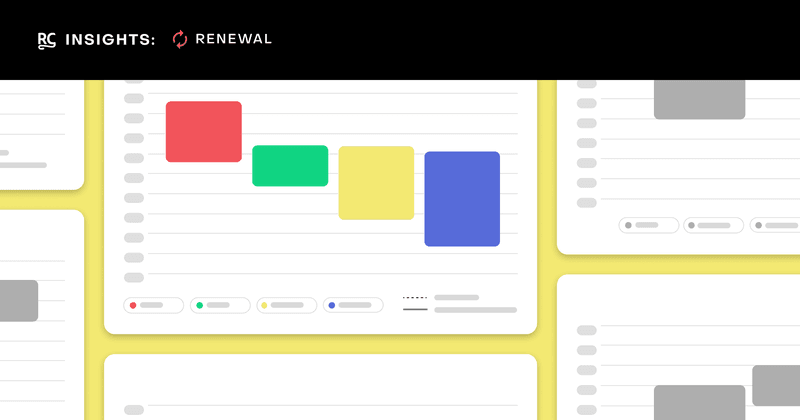How Subscription Duration Impacts Renewal Rates
We analyzed 10,000+ apps to find out

In our last blog post on monthly renewal rates, we analyzed 10,000+ subscription apps across iOS and Android to understand how monthly renewal rates change over the first three renewal cycles. Here we’ll dive into how the first renewal rates of different subscription durations compare.
Based on our data, monthly subscriptions have a median renewal rate of 56% at the first renewal, which jumps to 71% for the top quartile. For subscriptions with longer durations, median renewal rates are lower. Annual subscriptions have a median renewal rate of 27% after their first year, with the top quartile having 45% renewal rates.

While monthly subscriptions typically see the highest renewal rate at the first renewal, this does not necessarily mean that monthly subscriptions are “better” than any other subscription duration. Understanding how customers respond to different offerings in your app and how those ultimately drive customer lifetime value is essential.
What Can You Do Once You Know Your Renewal Rates?
Look at Your First Renewal Rate, Not Just Your Blended Renewal Rate
Large subscription companies like Amazon and Netflix report renewal rates over 90%, but they do so on a blended basis. This can be misleading since renewal rates tend to increase with each renewal period, as shown in our previous post on monthly renewal rates. Blended renewal rates are lifted by older cohorts who have been with the app for years and are less likely to churn.
By tracking the first renewal rate of your subscription products separately, you’ll better understand how changes to your marketing efforts, onboarding, and early product experience impact new-user retention. Newer cohorts will inherently see a higher churn rate, but they are what’s fueling your app’s growth.
To get new customers over the first renewal hurdle, ensure that you’re attracting the right customers and providing them with enough value. RevenueCat offers a subscription retention chart that shows you how paying subscribers renew and retain at the first renewal and over time by cohort.
Determine Why Customers Churn at the First Renewal
Renewal rates will tell you if someone does not renew their subscription, but not why they decided that the service was not worth the price. Churn may result from high pricing, app performance issues, a poor onboarding experience, failed payment, or any mix of these.
Tools like cancellation surveys allow you to collect direct feedback from your customers on why they are churning. Addressing the why can help reduce churn, improve your customer experience, boost reactivation rates, and grow your app. RevenueCat offers webhooks and integrations that make it easy to automate app cancellation survey emails.
Use the Right Metrics to Calculate Your Customer Lifetime Value and Expected Revenue
The higher the renewal rate, the more revenue you generate and the higher the customer lifetime value. The first renewal rate of your subscription offering is a key metric that provides actionable insights and impacts customer lifetime value. However, comparing first renewal rates is not an apples-to-apples comparison. Instead, evaluate the retention rates of different subscription durations over the same period to calculate your expected revenue from each offering.
For example, if you offer a monthly and annual subscription, compare your retention rate at the end of year 1 for both offerings. In other words, compare your retention rate at the first renewal of an annual subscription to your retention rate at the 12th renewal of a monthly subscription.
Stay tuned for an upcoming post on this topic. Also, RevenueCat offers various charts and tools that help you monitor and proactively improve your renewal rate.
You might also like
- Blog post
Gamification in apps: A complete guide to using motivation to drive real value
Daily streaks are not the solution - here are 11 better examples
- Blog post
Apple’s June 2025 EU update: one entitlement, three fees, and CTF’s 2026 sunset
What apps in the EU should do after Apple’s DMA tweak.
- Blog post
7 Meta ad testing frameworks for subscription apps
Balancing speed and accuracy with creative testing

